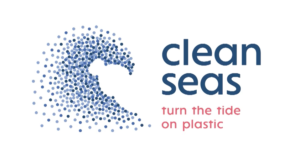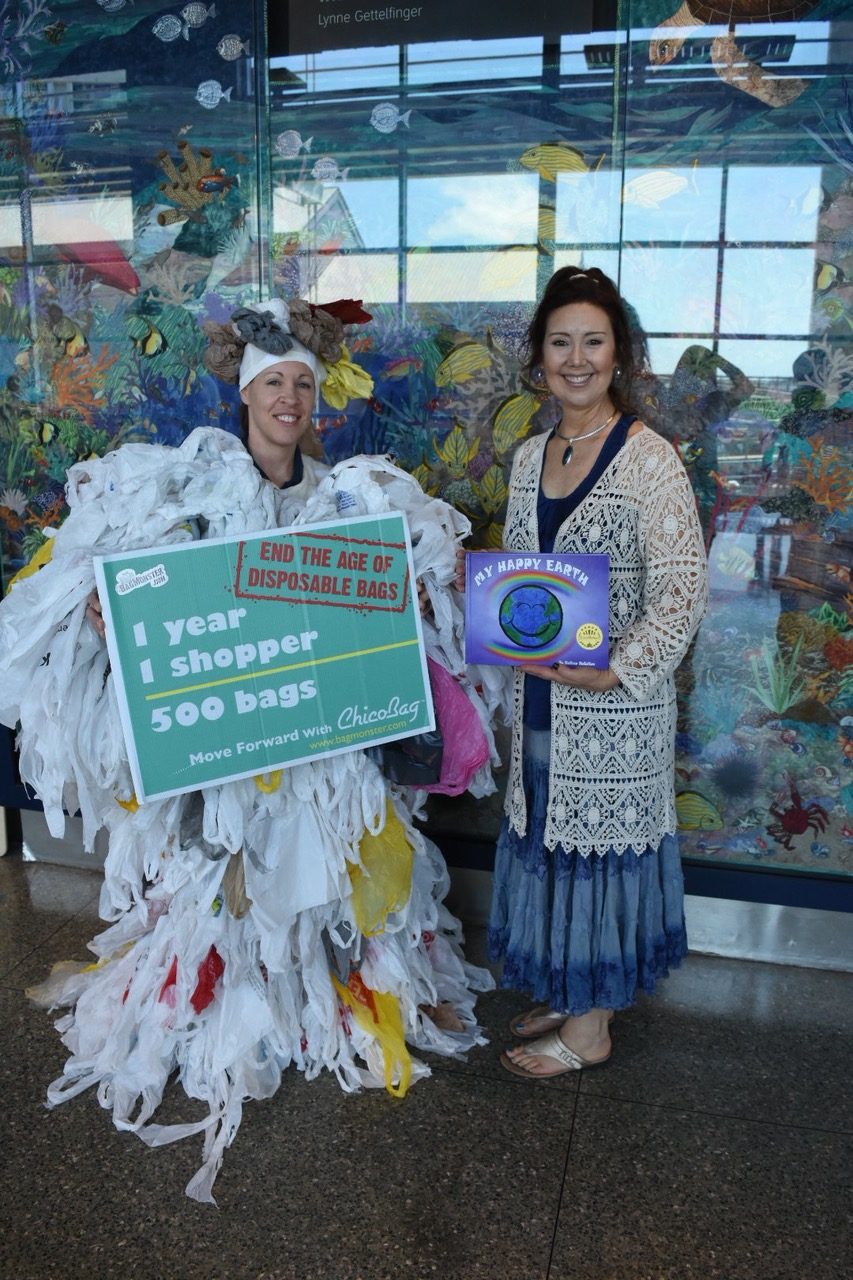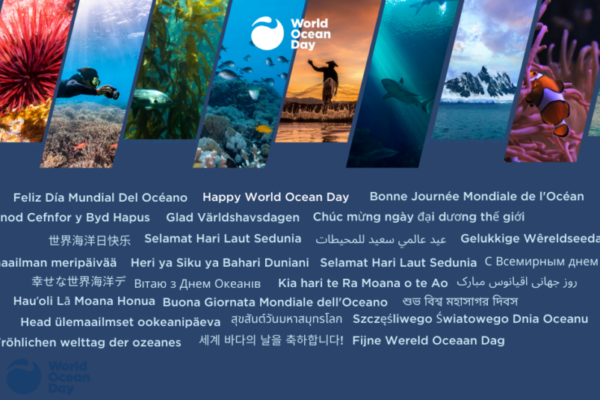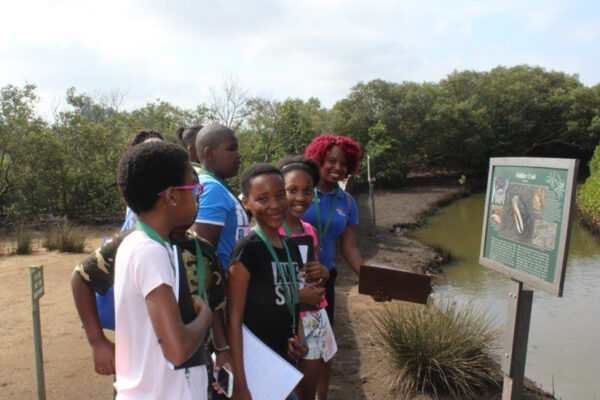During the week surrounding World Oceans Day, 12 zoos, aquariums and museums (ZAMs) participated in a pilot project that had them asking their visitors about helping to address the problem of plastic pollution in our ocean.
The response from visitors to the initial ask was positive, generating more than 1,300 (and counting!) commitments. But it was the apparent carryover effect of having been asked that was even more impressive!
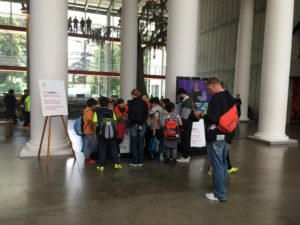
Visitors to the California Academy of Sciences participate in step one of the pilot: texting their concern about ocean plastic.
Exit surveys indicated that those visitors who had been asked to help then expressed:
• Higher awareness and concern about the problem
• Stronger belief that they could be part of the solution
• Greater appreciation of aquariums and zoos as conservation actors
• More satisfaction with their visit, and higher net promoter scores
In sum, the findings from this pilot project reinforce findings from prior research in showing that visitors appreciate when they are engaged in efforts that help animals and advance conservation, while adding support to the idea that visitors are especially open to being engaged on the issue of plastic pollution in our ocean.
Partnering With The United Nations To Promote Personal Commitments To Conservation
UN Environment, which is the new name of the United Nations Environment Programme aka UNEP, recently launched a five-year #CleanSeas campaign (https://cleanseas.org), under which they have been looking to document commitments from people worldwide who are willing to reduce their own use of disposable plastics. UN Environment’s plan is to bring that public interest in the aggregate to the attention of political and business leaders. The Ocean Project shared with UN Environment some of our earlier research and results about the way in which people going to aquariums and zoos not only expect, but trust and appreciate the conservation information they receive during a visit, which, in turn, led to the creation of this pilot.
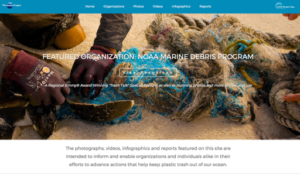 Creating an “online exhibition.” We developed the exhibition as a website with a curated set of photographs, videos, infographics and reports that can help our partners – aquariums, zoos and other visitor-serving institutions – across all their efforts, including and beyond this pilot, to engage the public on this issue and enhance the #CleanSeas campaign’s efforts overall. Big thanks here to 5 Gyres, Lonely Whale Foundation, Marine Photobank, National Geographic, NOAA Marine Debris Program, Story of Stuff, Surfrider, and others for sharing their materials! Be sure to check it out at www.ouroceansourfuture.org.
Creating an “online exhibition.” We developed the exhibition as a website with a curated set of photographs, videos, infographics and reports that can help our partners – aquariums, zoos and other visitor-serving institutions – across all their efforts, including and beyond this pilot, to engage the public on this issue and enhance the #CleanSeas campaign’s efforts overall. Big thanks here to 5 Gyres, Lonely Whale Foundation, Marine Photobank, National Geographic, NOAA Marine Debris Program, Story of Stuff, Surfrider, and others for sharing their materials! Be sure to check it out at www.ouroceansourfuture.org.
Developing a public engagement program. Working with UN Environment, our plan was to test this around World Oceans Day on June 8, and hopefully expand it in the future. We asked for volunteer ZAMs, and were excited by the immediate and strong response from our partner network! After some discussions about prior experiences, as well as the opportunities and costs associated with different approaches and the overall goal of documenting public concern and commitments, we settled on what we came to call “text-click-share.” Visitors would be asked to:
- Text a local number with the word “plastic” to express their concern about the problem, and receive a web link in response
- Click on that web link, and indicate if they would be part of the solution by choosing reusable bags, using refillable bottles, avoiding plastic straws, or “all of the above,” thus generating commitments for the UN Environment’s #CleanSeas campaign
- Share their commitments on social media, specifically Twitter or Facebook, as a way to amplify the impact
Importantly, we also decided – based on earlier research and experience – that the tone throughout these steps should be one of expecting shared interest and encouraging ongoing action, rather than anticipating antagonism or criticizing poor behavior. And while these essential elements of the ask remained the same, we wanted each site to have flexibility in its approach; some sites decided to include the ask as part of an animal presentation or special event on only one day, while others included it when doing dive shows or tabling over the course of two or more days. Eleven of the sites decided to focus their implementation the four days from World Oceans Day, a Thursday, through that Sunday. The other chose to implement during the two weeks after World Oceans Day.
The initial results were impressive! Over four days, the eleven sites generated a large number of commitments. Nearly 700 visitors texted, and nearly 550 “clicked,” yielding more than 1,300 commitments to reduce personal use of disposable plastics in just a few days – underscoring for our friends at the UN the potential power of ZAMs to inspire action!
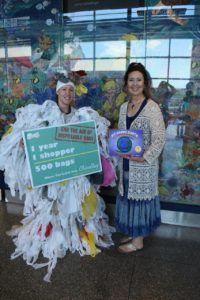
The South Carolina Aquarium used one of the bag monster costumes to help attract visitor attention.
What worked well? The pilot sites as a group were positive about:
- The resources provided, such as scripts, signs and “good choices” props, including high-quality reusable bags and drinking containers, provided thanks to the generosity of Klean Kanteen (https://www.kleankanteen.com) and Chico Bags (https://www.chicobag.com), which, notably also offer custom co-branded options!
- Tabling, and using props, one of the donated Chico Bag “Bag Monster” costumes, to attract visitor attention
- The nature and “level” of the ask, which staff said seemed “about right” in that visitors were praised for what they already were doing while being encouraged them do to a bit more. Also, nearly two-thirds of those visitors who made a commitment were willing to do so not just for one action but for “all of the above!”
What could have been better? As with all pilots, we learned a lot of lessons.
- The phone number was too long. We chose to go with the longer numbers based on cost considerations, anticipating that asking visitors to enter so many digits would be a hurdle, and it certainly was. Up to 50% of visitors who were engaged one-on-one, where the number typically was displayed nearby on a sign, would follow up by sending a text, but the response rate dropped to as low as 1% when visitors were engaged in a larger group setting, such as a show, where they typically did not have the benefit of signage
- Staff also reported that cell phone reception and privacy concerns also could limit a visitor’s ability or willingness to participate
- And although approximately 80% of those who texted also clicked, the transition from text to click could be “clunky,” especially on some iPhones, which instead of showing the web link often would preview a “thank you” screen and therein confuse some participants
- Last but not least, some recent and unexpected changes by Facebook in particular made it difficult for us to track the number of social media “shares”
How to move forward? Based on the feedback from the pilot sites, we hope to do the following:
- Two interfaces for on-site engagements
- A simplified texting system, using a five-digit short code rather than a standard ten-digit phone number, and include the ability to directly text in a commitment (E.g. text “bags” or “all”)
- A web-based setup for use on iPads or at computer kiosks to help overcome issues with cell service and concerns about privacy, noting staff may still need to be on hand to encourage response
- New ways to help attract attention and incentivize response, such as larger signs and banners that can be co-branded; and offering relevant items for giveaways or raffles (E.g. more Kleen Kanteens and Chico Bags perhaps, or some stainless steel or paper straws)
- Alternate messaging for use beyond World Oceans Day, with more of a connection to what the institution itself is doing, and an increased emphasis on a goal that people can easily understand (e.g. “we’re gathering one million commitments”)
- Offer a real-time display of results (noting that this is the already approved part three of the initial project – coming this summer)
- Assist sites in amplifying these efforts through social media (with lower expectations as to what individual participants might do on their own)
Assessing Visitor Experience, And Confirming A Carryover Effect
Five of the sites, as indicated above, also randomly surveyed more than 300 visitors on the days when they were implementing the pilot project. Visitors were asked a series of questions, and then on a final screen asked if during their visit they had been “asked to help with the problem of plastic trash in our ocean.”
Looking at the results across these sites (See below), what is most striking is the difference between the “yes” group (those visitors who were asked to help) and the “no/unsure” group (those visitors who were not, or did not recall, being asked to take action). As shown below, the “yes” group had not only higher expressions of awareness and concern about the problem, but stronger scores across the board. Most relevant to the goals of AZA SAFE, it is worth noting that the “yes” group had a greater appreciation for the role of aquariums and zoos in helping the ocean and its animals (“Strongly agree” for the yes group as compared to “moderately agree” for the “no/unsure” group). And for those who may have worried that asking visitors to help might negatively impact their experience, it is also worth noting that the “yes” group had higher net promoter scores (81 for the “yes” group as compared to 77 for the no/unsure group).
The sample size is large enough and the response is consistent enough to give us a high level of confidence in a correlation, though we are not yet comfortable saying causation. In other words, it is clear to us from this effort, as well as our prior pilots and projects, such as one completed last year with Sea Life Aquariums, that encouraging visitors to take actions that help the animals and advance conservation is, as one person put it succinctly, a “no-brainer” for zoos and aquariums.
Thank you to our participating pilot sites!
- Arizona-Sonora Desert Museum*
- California Academy of Sciences*
- Houston Zoo
- Mystic Aquarium
- North Carolina Aquarium (Fort Fisher)
- North Carolina Aquarium (Pine Knoll Shores)*
- Point Defiance Zoo & Aquarium
- Riverbanks Zoo*
- Roger Williams Park Zoo*
- Sea Life Aquarium (Carlsbad)
- South Carolina Aquarium
- Virginia Aquarium & Marine Science Center
*Sites also conducting exit surveys
**Two additional partners, Shedd Aquarium and the Wildlife Conservation Society helped with the development of the effort, then decided to implement their own unique variations on the ask.
